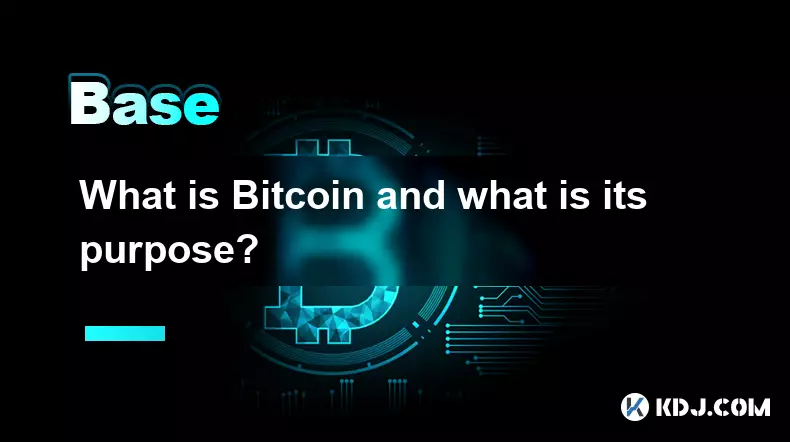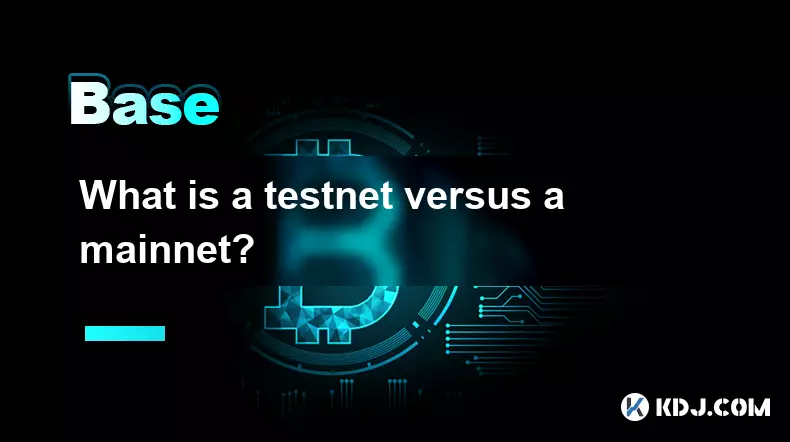-
 Bitcoin
Bitcoin $109800
0.96% -
 Ethereum
Ethereum $4462
-0.28% -
 Tether USDt
Tether USDt $1.000
0.01% -
 XRP
XRP $2.821
-0.71% -
 BNB
BNB $861.7
0.16% -
 Solana
Solana $202.1
-1.48% -
 USDC
USDC $1.000
0.03% -
 Dogecoin
Dogecoin $0.2184
0.01% -
 TRON
TRON $0.3411
-0.35% -
 Cardano
Cardano $0.8371
0.97% -
 Chainlink
Chainlink $23.72
-0.38% -
 Hyperliquid
Hyperliquid $45.31
1.40% -
 Ethena USDe
Ethena USDe $1.001
0.03% -
 Sui
Sui $3.324
-0.19% -
 Stellar
Stellar $0.3621
0.40% -
 Bitcoin Cash
Bitcoin Cash $547.2
-0.56% -
 Avalanche
Avalanche $24.23
0.46% -
 Cronos
Cronos $0.2828
-3.05% -
 Hedera
Hedera $0.2226
-1.80% -
 UNUS SED LEO
UNUS SED LEO $9.611
0.32% -
 Litecoin
Litecoin $110.7
-0.96% -
 Toncoin
Toncoin $3.157
0.51% -
 Shiba Inu
Shiba Inu $0.00001250
0.45% -
 Polkadot
Polkadot $3.851
0.19% -
 Uniswap
Uniswap $9.753
-1.24% -
 Dai
Dai $0.9999
0.00% -
 Bitget Token
Bitget Token $4.570
0.11% -
 Monero
Monero $268.2
2.03% -
 Aave
Aave $316.7
-1.64% -
 Ethena
Ethena $0.6473
-4.43%
What is Bitcoin and what is its purpose?
Bitcoin’s decentralized, scarce nature and blockchain foundation make it a transformative digital asset reshaping global finance, payments, and monetary policy. (154 characters)
Aug 31, 2025 at 04:00 pm

Understanding Bitcoin and Its Role in the Digital Economy
1. Bitcoin is a decentralized digital currency that operates without the control of any central authority or financial institution. It was introduced in 2009 by an anonymous entity known as Satoshi Nakamoto through a whitepaper titled 'Bitcoin: A Peer-to-Peer Electronic Cash System.' The core innovation behind Bitcoin is blockchain technology, which serves as a public, immutable ledger recording all transactions across a distributed network of computers.
2. Unlike traditional fiat currencies, Bitcoin is not backed by any government or physical commodity. Its value is derived from supply, demand, network security, and user trust. There will only ever be 21 million Bitcoins in existence, a hard cap coded into the protocol, which introduces scarcity—a key factor influencing its valuation.
3. The primary purpose of Bitcoin is to enable peer-to-peer transactions across the globe without intermediaries such as banks or payment processors. This allows for faster, more transparent, and often cheaper transfers, especially for cross-border payments. By removing middlemen, Bitcoin reduces transaction fees and processing delays commonly associated with conventional financial systems.
4. Bitcoin also serves as a store of value for many investors, often referred to as 'digital gold.' Due to its limited supply and resistance to inflationary policies, individuals and institutions alike view Bitcoin as a hedge against currency devaluation and economic instability. This function has become increasingly relevant in regions experiencing hyperinflation or capital controls.
5. The network relies on a consensus mechanism called Proof of Work (PoW), where miners use computational power to validate transactions and secure the network. In return, they are rewarded with newly minted Bitcoins and transaction fees. This process not only maintains network integrity but also ensures that no single entity can manipulate the transaction history.
Key Features That Define Bitcoin’s Utility
1. Decentralization is one of Bitcoin’s most defining characteristics. The absence of a central governing body means that no government or corporation can unilaterally alter its rules or freeze accounts. This empowers users with full control over their funds and enhances resistance to censorship.
2. Transparency is achieved through the blockchain, where every transaction is publicly recorded and verifiable by anyone. While user identities are not directly exposed, transaction patterns can be analyzed, creating a balance between privacy and accountability.
3. Bitcoin’s programmable nature allows for integration with various financial applications, such as wallets, exchanges, and custodial services, expanding its usability in the digital asset ecosystem. Developers can build on top of the Bitcoin network using layers like the Lightning Network, enabling instant micropayments with minimal fees.
4. Immutability ensures that once a transaction is confirmed and added to the blockchain, it cannot be altered or reversed. This feature strengthens trust in the system, as users can rely on the permanence of records without fear of tampering.
5. Global accessibility allows anyone with an internet connection to participate in the Bitcoin network. This is particularly transformative for the unbanked and underbanked populations who lack access to traditional financial infrastructure but can use smartphones to transact and store value.
Bitcoin’s Impact on Financial Systems and Markets
1. The emergence of Bitcoin has challenged the monopoly of centralized financial institutions by offering an alternative means of storing and transferring value. Its success has inspired the creation of thousands of other cryptocurrencies and blockchain-based projects aiming to replicate or improve upon its model.
2. Institutional adoption of Bitcoin has grown significantly, with major companies, hedge funds, and even nation-states allocating capital to Bitcoin as part of their treasury reserves. This shift reflects a growing recognition of its legitimacy and long-term potential as a financial asset.
3. Bitcoin has influenced monetary policy discussions worldwide, prompting central banks to explore digital currencies of their own (CBDCs) in response to the rise of decentralized alternatives. This dynamic illustrates how Bitcoin is reshaping the global conversation around money, sovereignty, and financial innovation.
4. Regulatory responses to Bitcoin vary widely across jurisdictions. Some countries have embraced it with clear legal frameworks, while others have imposed restrictions or outright bans. Despite this fragmentation, the underlying technology continues to evolve and adapt, demonstrating resilience in the face of regulatory uncertainty.
5. Market volatility remains a notable aspect of Bitcoin’s price behavior. While this can deter risk-averse investors, it also presents opportunities for traders and speculators. Over time, as liquidity increases and adoption broadens, price fluctuations may stabilize, though this process is ongoing.
Frequently Asked Questions
How is Bitcoin different from traditional money?Bitcoin differs from traditional money in that it is not issued or controlled by any government or central bank. It operates on a decentralized network using blockchain technology, enabling direct peer-to-peer transactions without intermediaries. Traditional money relies on centralized institutions for issuance, regulation, and transaction processing.
Can Bitcoin be used for everyday purchases?Yes, Bitcoin can be used for everyday purchases, though adoption varies by region. Some merchants accept Bitcoin directly, while others use payment processors that convert Bitcoin into local currency at the point of sale. The Lightning Network has improved transaction speed and reduced costs, making small payments more feasible.
Is Bitcoin legal?The legality of Bitcoin depends on the country. In many nations, including the United States, Canada, and most of Europe, Bitcoin is legal and regulated. However, some countries have imposed restrictions or bans due to concerns over money laundering, tax evasion, or financial stability.
What happens when all 21 million Bitcoins are mined?Once all 21 million Bitcoins are mined, expected around the year 2140, miners will no longer receive block rewards. Instead, they will rely solely on transaction fees to incentivize network security and validation. The protocol is designed to support this transition, ensuring continued operation without inflationary issuance.
Disclaimer:info@kdj.com
The information provided is not trading advice. kdj.com does not assume any responsibility for any investments made based on the information provided in this article. Cryptocurrencies are highly volatile and it is highly recommended that you invest with caution after thorough research!
If you believe that the content used on this website infringes your copyright, please contact us immediately (info@kdj.com) and we will delete it promptly.
- Memecoins September 2025 Watchlist: What's Hot Now?
- 2025-08-31 23:25:15
- Eric Trump Predicts Bitcoin to $1 Million: Hype or Reality?
- 2025-08-31 23:25:15
- BlockDAG: Redefining Scalability and ROI Potential in 2025
- 2025-08-31 23:05:16
- Ozak AI, Altcoins, and 20x Potential: Navigating the Crypto Landscape
- 2025-09-01 00:05:12
- Bonk Price, Solana Meme Coin, and the Rise of Layer Brett: A New Era?
- 2025-08-31 21:25:12
- ETH Transactions Soar, BTC Whale Shifts Gears: Decoding August's Crypto Charts
- 2025-08-31 21:05:16
Related knowledge

What is the halving in Bitcoin?
Aug 30,2025 at 10:18pm
Understanding Bitcoin Halving1. The Bitcoin halving is an event coded into the blockchain’s protocol that reduces the reward miners receive for valida...

What are the different consensus mechanisms in blockchain?
Sep 01,2025 at 03:54pm
Proof of Work and Its Role in Blockchain Security1. Proof of Work (PoW) is one of the earliest and most widely recognized consensus mechanisms, primar...

What is a testnet versus a mainnet?
Aug 30,2025 at 06:54pm
Understanding the Role of Testnets in Blockchain Development1. A testnet serves as a parallel blockchain environment designed specifically for develop...

What are some common crypto scams to avoid?
Sep 01,2025 at 06:18am
Crypto Scams Involving Fake Exchanges1. Fraudulent platforms often mimic legitimate exchanges by using similar names and logos to deceive users. These...

What are crypto faucets?
Aug 30,2025 at 08:10am
Understanding Crypto Faucets1. Crypto faucets are online platforms that distribute small amounts of cryptocurrency to users for completing simple task...

What are privacy coins?
Aug 30,2025 at 06:18am
Understanding Privacy Coins in the Cryptocurrency Ecosystem1. Privacy coins are a category of cryptocurrencies specifically designed to enhance transa...

What is the halving in Bitcoin?
Aug 30,2025 at 10:18pm
Understanding Bitcoin Halving1. The Bitcoin halving is an event coded into the blockchain’s protocol that reduces the reward miners receive for valida...

What are the different consensus mechanisms in blockchain?
Sep 01,2025 at 03:54pm
Proof of Work and Its Role in Blockchain Security1. Proof of Work (PoW) is one of the earliest and most widely recognized consensus mechanisms, primar...

What is a testnet versus a mainnet?
Aug 30,2025 at 06:54pm
Understanding the Role of Testnets in Blockchain Development1. A testnet serves as a parallel blockchain environment designed specifically for develop...

What are some common crypto scams to avoid?
Sep 01,2025 at 06:18am
Crypto Scams Involving Fake Exchanges1. Fraudulent platforms often mimic legitimate exchanges by using similar names and logos to deceive users. These...

What are crypto faucets?
Aug 30,2025 at 08:10am
Understanding Crypto Faucets1. Crypto faucets are online platforms that distribute small amounts of cryptocurrency to users for completing simple task...

What are privacy coins?
Aug 30,2025 at 06:18am
Understanding Privacy Coins in the Cryptocurrency Ecosystem1. Privacy coins are a category of cryptocurrencies specifically designed to enhance transa...
See all articles

























































































